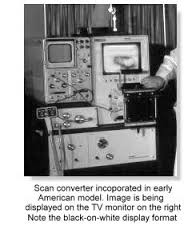Here
we are at another Tuesday afternoon, this week in History Tuesday I
am going to tell you a little about the history of the ultrasound why
because this morning I had to have one done on my stomach area. I
think we are used to ultrasounds although I am sure there are people
who only think they are used on pregnant women but that is far from
true.
In
1794 Lazzaro Spallanzani a Physiologist was the first known man to
experiment with ultrasound.
Then
in 1826 Jean Daniel Colladon and Physicist used under-water church
bell an early ultrasound transducer under-water to calculate the
speed of sound through water to prove that sound travelled faster
through water than air.
Let's
jump forward to 1915 when Paul Langevin another Physicist invents a
Hydrophone (1st transducer) to detect Icebergs and
Submarines during the first World War.
However,
it wasn't till 1942 when a Neurologist and Psychiatrist Karl Dussik
at the University of Vienna used ultrasound for medical diagnosis he
was looking for brain tumours.
The
in 1948 George Ludwig M,D described the us of ultrasound to diagnosed
gallstones.
Ok
let's move onto a bit more about the use of ultrasounds here in
Australia, it was in 1962 that the first ultrasound machine was used
in obstetrics the machine consisted of a trolley running on a
circular track and performed compound scan motions. The patient
stood on a angled stretcher and her abdomen was brought into contact
with the flexible window on the wall of the coupling tank. That first
scan took place at the Royal Hospital for Women in Paddington, Sydney
on the 11 May 1962 and a week later on the 18th May the
examination showed that the foetus could clearly be displayed and
that some echoes were seen within the foetal boundary. Examples of
this work were presented by George Kossoff at a symposium, held at
the University of Illinois in the USA in June 1962 and was
acknowledged as the state-of-the-art for the time.
A
couple of years later in 1964 the first ophthalmic echoscope was
used at the Royal Prince Alfred Hospital in Camperdown Sydney and in
1966 the first breast echoscope was installed at the Royal North
Shore Hospital in Sydney. In the early 1970's the same type of
ultrasound used to scan the abdomen was used to look at babies and
children’s brains. To scan with this machine each cross section had
to be scanned in 17 seconds.
The
sonographers' training in contact scanning techniques was undertaken
by scanning in rhythm with a metronome and timed by a stopwatch until
the technique was mastered. The later development of the analogue
scan converter, thankfully relaxed the method.
They
have come a long way since those first days, now days there are
several different scanning modes in medical and obstetric ultrasound,
the most common and standard is 2D scanning although 3D is also quiet
common now usually with obstetric scans, with 3D scanning instead of
the sound waves being sent straight down and reflected back they are
sent at d different angles, the returning echoes are processed by a
sophisticated computer program resulting in a reconstructed
three-dimensional volume image of the foetus’s surface or internal
organs.
3D
ultrasound was patented by Olaf Von Ramm and Stephen Smith at Duke
University in 1987














I always think of the old story about when 1930's baseball star Dizzy Dean got hit in the head with a pitch. He had x-rays and the next day, the newspaper headline in St Louis was, "X-Ray of Dean's Head Shows Nothing". Hopefully, it will be the same (for a different reason) with your scan tomorrow.
ReplyDeleteYeah that is funny xray the head find nothing I know my ultrasound will show I have a fatty liver
DeleteThe joke in the first comment about Dizzy Dean made me laugh. I didn't know any of that stuff about the ultrasound. I had two of them the second time I was pregnant. I was miserable because they said to drink all this water ahead of time. I was afraid I would pee as they pressed the scanner against my bladder.
ReplyDeleteLove,
Janie
Oh yeah how I hated it when I was told to drink a heap of water before the ultrasound it was difficult to hold it and not wet myself
ReplyDeleteIt's marvellous the ultra sound. Interesting reading Jo-Anne
ReplyDeleteThanks I thought so
DeleteThat is remarkable. We take them for granted these days but I never realized that someone actually figured out how to use them so long ago.
ReplyDeleteyeezy wave runner 700
ReplyDeletepg 1
off white hoodie
nike basketball shoes
michael kors factory outlet
louboutin shoes
jordan 1 off white
christian louboutin shoes
converse outlet
lebron 13
hermes bag
ReplyDeletenike air max 2017
kd 12
nike air max 97
russell westbrook shoes
supreme hoodie
balenciaga speed
hermes handbags
kyrie 6
supreme hoodie
Website replica designer backpacks Visit Website bag replica high quality her comment is here gucci replica handbags
ReplyDeleteb4s35g3i54 t9f05g6l88 k9b73i8o81 r9w84p3e01 g1d03s6h36 z6x69q7b55
ReplyDelete